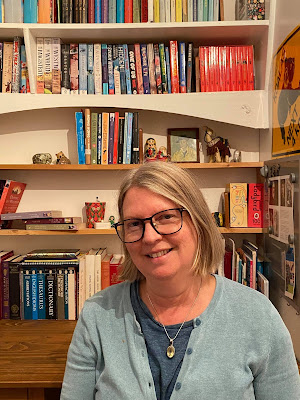I visited the fascinating London Museum of Water and Steam, to see how clean water saves people from disease.We all know now what it’s like to go through a global pandemic. As Covid 19 spread around the world, it wasn’t immediately clear what we should do to stop it. Now we know the virus is mainly spread through the air droplets from an infected person’s nose or mouth. Throughout history, people have been faced with epidemics and the difficulty of trying to prevent them. For my last book, I researched the 1848 epidemic of cholera in London. Thousands of people died from this devastating illness, but at that time they didn’t understand how it was spread. People thought the disease was caused by bad air, or ‘miasma’. It’s easy to see how terrified everyone must have been and why they thought that the stink from the river was making them sick. They were right to think the river was the problem, but not because of the smell. The water in the Thames was contaminated by cholera-infected sewage.A doctor called John Snow identified the source of a deadly cholera outbreak to a pump in Broad Street.
John Snow suspected that dirty water was the problem. In 1849 he wrote a paper querying whether water could be transmitting cholera, but he faced a lot of opposition. Many people, even officials, were convinced of the bad air theory. Others were keen to blame cholera on poor people. It wasn’t until 1854 that John Snow was able to prove his water theory. He followed the trail of people who fell ill with cholera, and discovered that the first person to catch it was a woman who had fetched water from a pump contaminated by cholera-infected nappies. It was only in the mid 19th century that germ theory came to be understood so that helps explain why people resisted this for so long.Other diseases could be spread in water – for instance the deadly outbreak of typhoid that came from a poo in a well.
Many people got their water from stand pumps, wells or rivers but as the 19th century progressed more and more Thames water was pumped into buildings.The problem was that as London rapidly expanded, the river was becoming more and more contaminated by sewage and industry. It even came to be known as ‘the big Stink’. Eventually the Thames was so dirty that the Chelsea pump could no longer be used and in 1838 a new one was built in Brentford – the Kew Bridge Waterworks where the museum now is. The water was lovely and clean here because it was still mostly countryside, and at first the river water was pumped directly as it was. This pump used steam and was enormous. It’s still in the main block now.Soon after building the Waterworks, it was decided that the river water should be cleaned up before pumping it to Londoners’ homes. So a system of filter beds and reservoirs was created around the site. By 1848 all waste had to be discharged into street sewers. Unfortunately, these emptied into the Thames and unfortunately, when it rains heavily this still happens today.It’s very interesting to see all the different pumps that have been rescued and restored at the museum. Pumping water went from wind power to steam to electricity. There is still a pump working away to supply water to Londoners but now it is underground. Almost certainly, some of the electricity will come from wind energy.Writing Challenge
Clean water is a necessity of life. We are mostly made of water and we call our earth ‘the blue planet’ because so much of its surface is water. Poets have always written special poems to things, people, ideas or places that they love. This kind of poem is an ‘ode’. Can you write an Ode to Water? First make a list of the things you love best about water. Each one can become a line of your poem.
Here is my list:
Pushing my hands through blue swimming pool water
Raindrops on cobwebs
Wet pavements
Ice-cold tap water in winter
Soft dark green pond waterJeannie Waudby is the author of YA thriller/love story One of Us. She has recently completed a YA novel set in Victorian times.
Showing posts with label Kew Bridge Waterworks. Show all posts
Showing posts with label Kew Bridge Waterworks. Show all posts
Saturday, 4 March 2023
Subscribe to:
Comments (Atom)
VIKING ATTACK! Write a DUAL NARRATIVE ACTION SCENE
VIKING ATTACK! Write a DUAL NARRATIVE ACTION SCENE First, watch the Time Tunnellers video about the Viking Attack on the Holy Island of L...

-
VIKING ATTACK! Write a DUAL NARRATIVE ACTION SCENE First, watch the Time Tunnellers video about the Viking Attack on the Holy Island of L...
-
That the Paralympics rose out of such a dark place, from the ashes of the Second World War, wounded men and a fugitive from the Nazis, says ...
-
On Thursday July 4th, the U.K will go to the polls to vote in the General Election. Eligible voters will select from a list of candidates wh...











